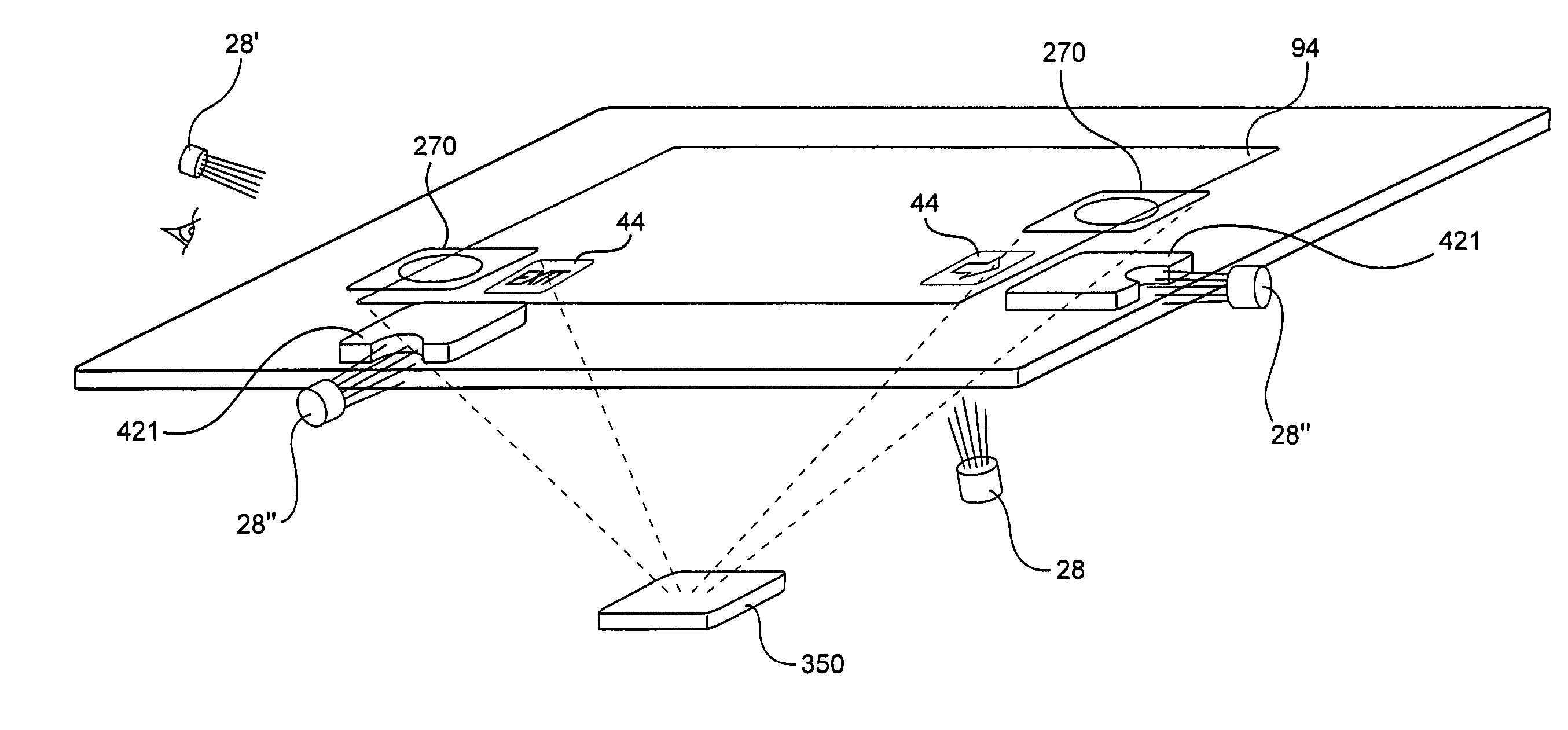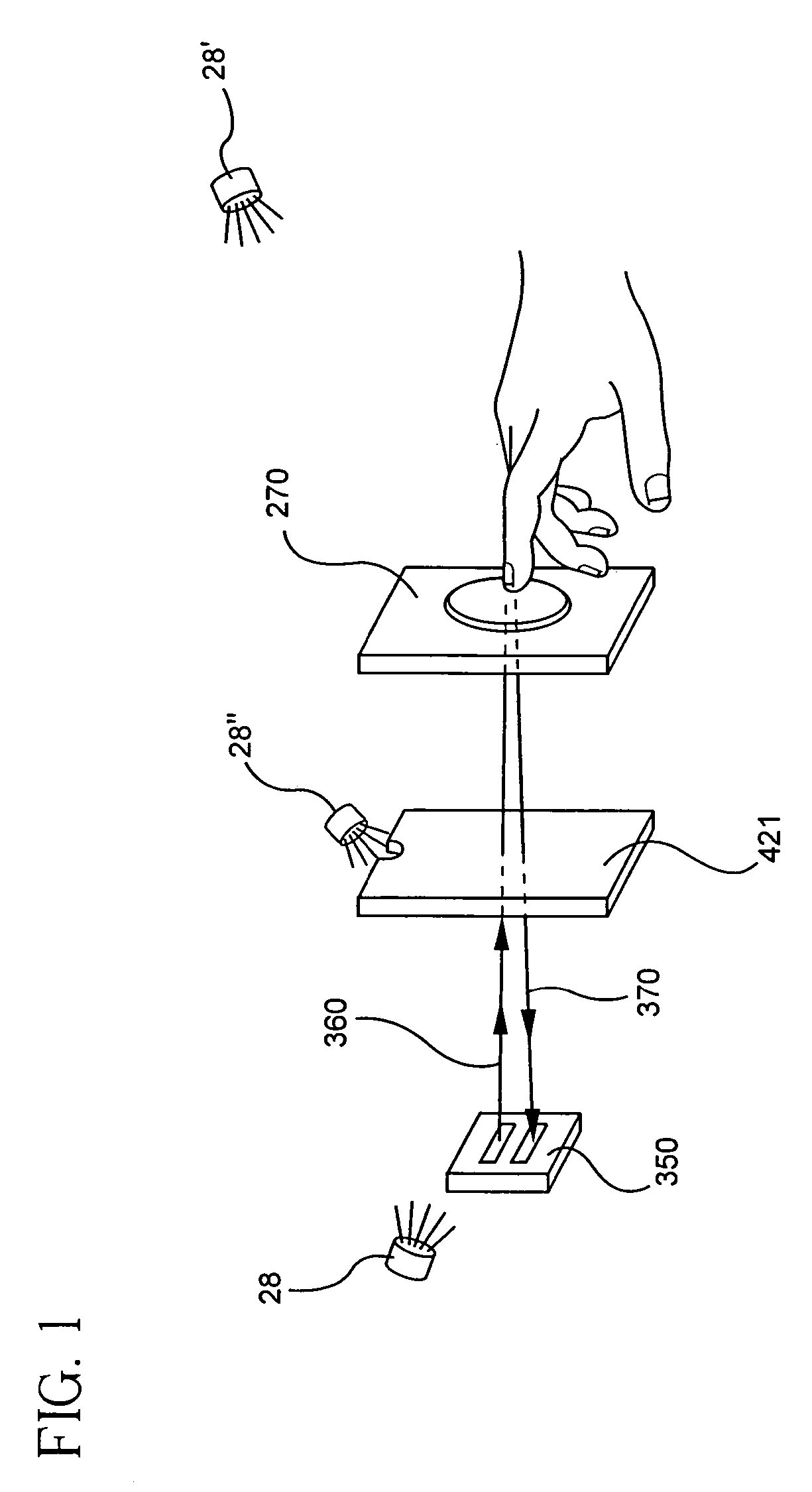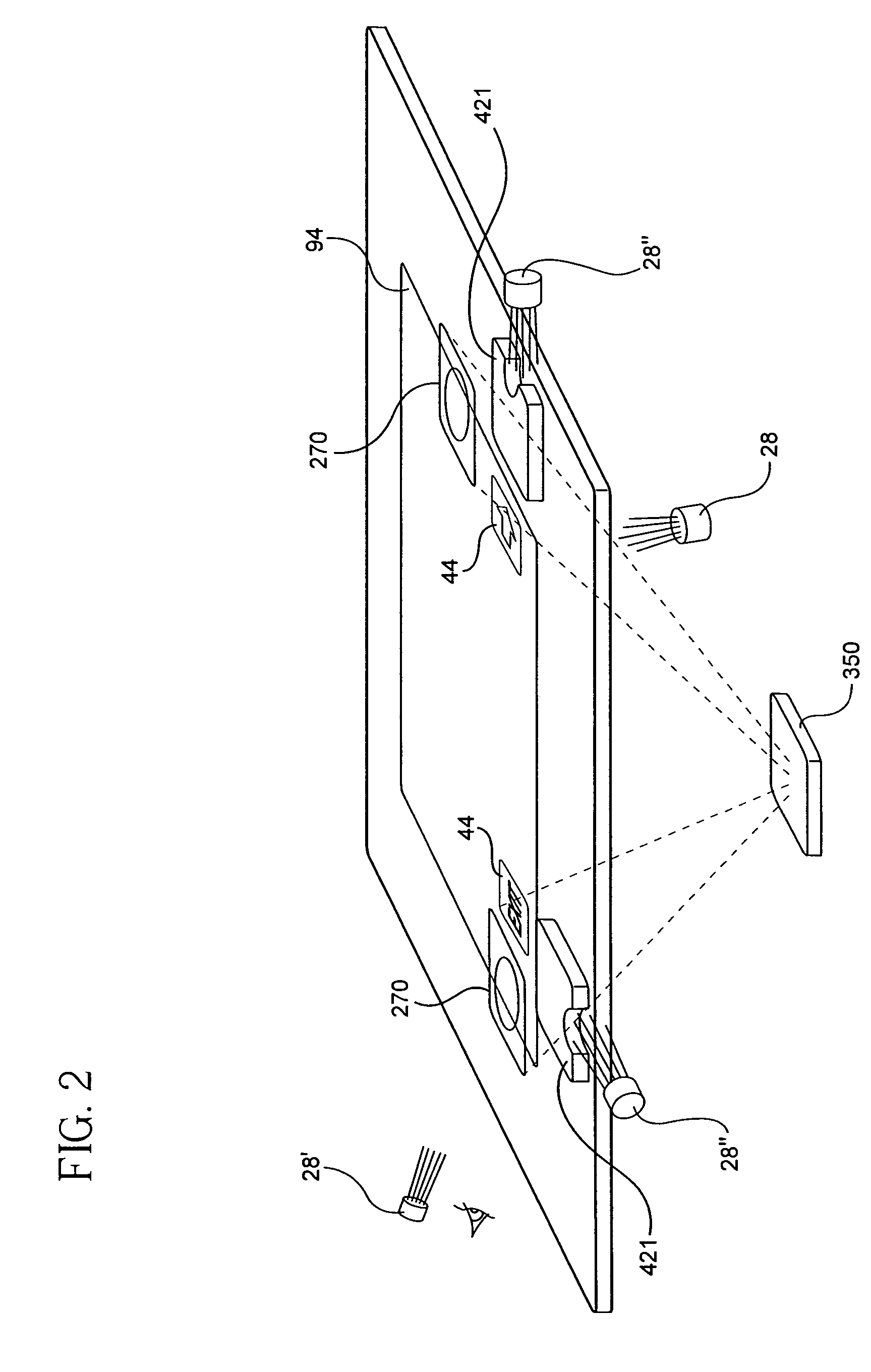Holographic human-machine interfaces
a human-machine interface and holographic technology, applied in the field of holographic human-machine interfaces, can solve the problems of large power consumption, inability to smoothly integrate holographic images, and impracticality for some uses, so as to reduce the power consumption, size and weight of conventional holographic hmis, and facilitate the convenience of human operators. the effect of integrating information presentation features of electronic or electro-mechanical devices being controlled
- Summary
- Abstract
- Description
- Claims
- Application Information
AI Technical Summary
Benefits of technology
Problems solved by technology
Method used
Image
Examples
first embodiment
NG
[0023]The first embodiment of the present invention provides a means for reducing the size and weight of holographic HMIs by positioning detecting sensors behind the hologram in relation to the operator, so as to permit those sensors to “look through” the medium upon which the hologram is mounted. This arrangement offers a desirable alternative to positioning of wave source sensors alongside the hologram or on the same side of the hologram as the operator because required hardware can be more compact, reducing the size and weight of the holographic HMI.
[0024]Certain types of wave source sensors suitable for use in the construction of holographic HMIs can “look through” certain types of materials on which holograms can be affixed, embossed or mounted. The types of materials on which holograms can be affixed, embossed or mounted include, but are not limited to, acrylic, glass and plastic, of varying thicknesses. Types of sensors that can “look through” those materials include, but a...
second embodiment
[0032]The second embodiment of the present invention provides a means for positioning the hologram(s) so that their reconstructed holographic images of keys or other customarily touch-activated tangible input devices appear below, above, or on either side of the screen employed to present input or output information to an operator, with respect to the electronic or electro mechanical device(s) being actuated or controlled.
[0033]In FIG. 2, information presentation device 94 (or other electronic presentation of information) concerning the electronic or electro mechanical device is actuated or controlled by holographic HMIs. Icons (or other symbols) 44 appearing on the information presentation device 94 indicate possible choices or selections for the operator of the holographic HMI's electronic or electro mechanical device. Holographic images 270 corresponding to icons (or other symbols) 44 are positioned below, above, or on either side of information presentation device 94 in order to...
third embodiment
E DEVICES
[0037]The third embodiment of the present invention provides a means for improving holographic HMIs intended for use in places or situations where two or more electronic or electro mechanical devices are to be actuated or controlled by a small number of people, such as vehicle or aircraft cockpits or industrial or military control facilities. A single hologram recorded according to methods known to artisans is positioned so as to project images of keys or other customarily touch-activated tangible input devices of two or more electronic or electro mechanical devices at a single location, convenient to the operator(s). This arrangement enhances operator convenience while limiting operator distraction from principal tasks by reducing the operator's need to look away from those tasks in order to interact with electronic or electro mechanical devices.
[0038]In one example of this embodiment, multiple electronic devices, such as those installed in an automobile cockpit, for examp...
PUM
 Login to View More
Login to View More Abstract
Description
Claims
Application Information
 Login to View More
Login to View More - R&D
- Intellectual Property
- Life Sciences
- Materials
- Tech Scout
- Unparalleled Data Quality
- Higher Quality Content
- 60% Fewer Hallucinations
Browse by: Latest US Patents, China's latest patents, Technical Efficacy Thesaurus, Application Domain, Technology Topic, Popular Technical Reports.
© 2025 PatSnap. All rights reserved.Legal|Privacy policy|Modern Slavery Act Transparency Statement|Sitemap|About US| Contact US: help@patsnap.com



